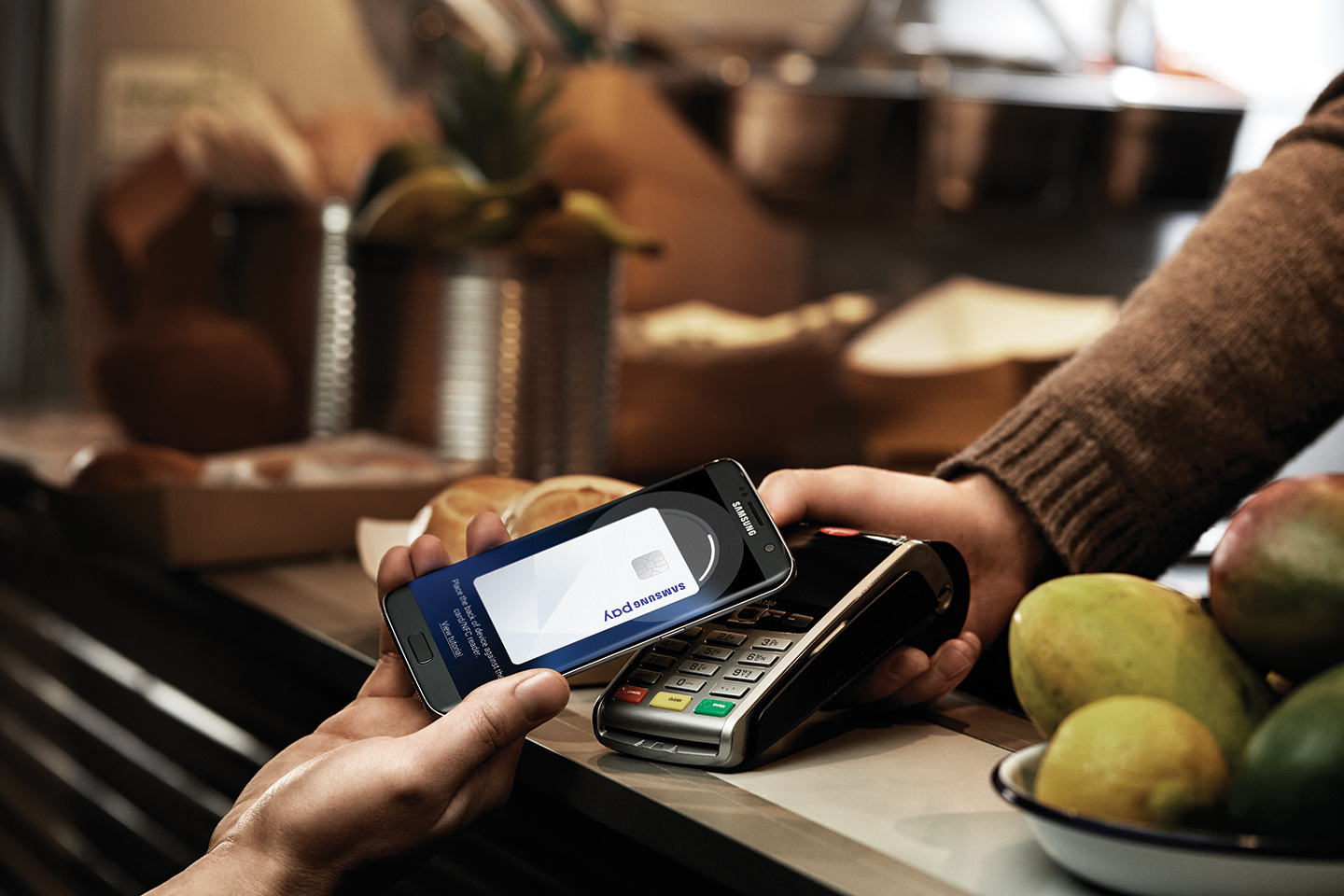
Samsung Pay gets a refreshed interface that transforms it into a digital wallet
By Ken Yeung for VentureBeat
When Samsung launched its mobile payment service last year, it entered a market where it went head-to-head with Apple and Google. The idea behindSamsung Pay was simple: to offer a secure and easy-to-use mobile payment service that lets consumers make purchases practically anywhere physical cards are accepted. But just how different is it from Apple Pay and Android Pay, two competing services created by the respective operating system manufacturers?
On Tuesday, the company announced the rollout of not only a new user interface and experience, but in-app support for a select set of ecommerce companies.
“If consumers always have to guess whether a store accepts a mobile payment it creates a mental friction. I believe in creating a basic technology that removes that friction,” Samsung’s executive vice president Injong Rhee once remarked. It’s that type of thinking that has caused the electronics manufacturer to roll out a new user experience for Samsung Pay later this year. It shifts the focus of the service away from being just about payments to becoming a true digital version of the wallet you carry around.
To give consumers a reason to switch from Android Pay or Apple Pay, Samsung is implementing its so-called “payment+” strategy, which touts additional benefits to using Samsung Pay beyond as a payment mechanism. Starting in November, the service has been transformed into something that’s the equivalent of Apple’s Passbook, where you can not only store digital versions of your debit and credit cards, but also of the 4 million membership and loyalty cards on the platform, like those for Safeway, CVS, Walgreens, Starbucks, Macy’s, and Sears.
Although this updated interface provides consumers with more examples of use cases, it’s also an opportunity to highlight to merchants why Samsung Pay is better than its competitors. Merchants can essentially craft a newsletter-like offering touting specials and providing relevant deals and specials to customers based on their location and other available and permitted data.
Samsung has even implemented some game mechanics where select consumers would receive coupons or other savings based on things such as whether they’ve shared something on social media, if they’ve made a certain number of transactions, and other activities. Merchant promotions are not to be thought of as ad placements, according to Thomas Ko, the company’s general manager for its payment service, and can last between a few weeks and months.
“We decided that we’ll be more than payments,” Ko explained. “We wanted to be closer to the lifestyle of the user.” Beyond just being a place to store your cards, Samsung Pay will be a place to provide consumers with education on how to use it, while information on other Samsung offerings. Merchants can also purchase space to market their items and provide specials to consumers, based on location and interest.
While it’s one thing to facilitate mobile payments, it’s another to aid in discovery of relevant products. There are plenty of ways people can make a purchase, including cash, credit or debit card, checks, or even opt for a myriad of offerings such as the aforementioned PayPal, Apple Pay, and Android Pay, which justadded support for Visa Checkout and Masterpass.
But Samsung thinks its advantage is how accessible it is. Peng Ning, the senior vice president at Samsung Research, shared that because Samsung Pay supports both Near Field Communication (NFC) and Magnetic Secure Transmission (MST), the service can be accepted by a majority of terminals, meaning that merchants don’t have to purchase additional hardware. To underscore this, just look at Mastercard’s announcement today where it launched support for Samsung Pay, meaning that wherever Masterpass is accepted, Samsung Pay can be used. He also stated that users love the service, boasting that Samsung Pay has received the highest rating of any payment app.
While new to those in the U.S., this upgraded experience has been available in South Korea, where Ko stated users liked the new offering and appreciated having a “slimmed down wallet.” But what’s different about the versions is that while South Korea’s version of this experience allows both online and offline purchases through Samsung Pay, in the U.S., promotions featured are limited to in-store.
An important sign of a service’s potential is adoption and by all accounts, it seems that Samsung Pay has some pretty good traction. It has enlisted the help of 500 banks worldwide and is now available in 7 countries, with Malaysia, Thailand, and Russia soon to launch this year. The company reports that in South Korea, it has processed between $2 billion and $3 billion in transactions since Samsung Pay’s launch in the country. However, Ko said it was more difficult to assess total transaction volumes worldwide due to data privacy restrictions imposed by individual banks.
But that’s not all Samsung is working on, as it’s exploring native integration of Samsung Pay within apps outside of South Korea. This November, users will be able to use Samsung Pay as the default payment option within select merchant apps, starting with Raise, Fancy, Hello Vino, Wish, and Touch of Modern. While these are just the start of Samsung’s integration with third-party developers, there are other areas where this might come in handy. Ko said that the company wants to make sure that it’s available to all and will work openly with as many partners.
Of course opening itself up to third-party developers requires some thinking, which is why the company will be selective in which apps it works with. “Security is one of the most important things when it comes to payment and data,” Ko explained. “Samsung Pay is built on Knox, it’s the only one channel that [Samsung] controls. We will want to know who’s accessing our SDKs and APIs, and certify that there’s no backdoor entrances.”
First appeared at VB







